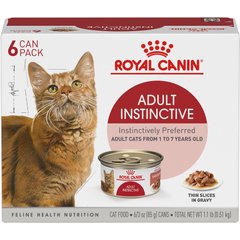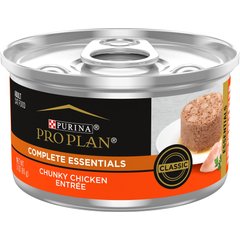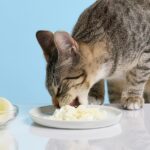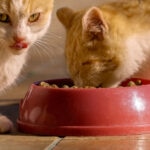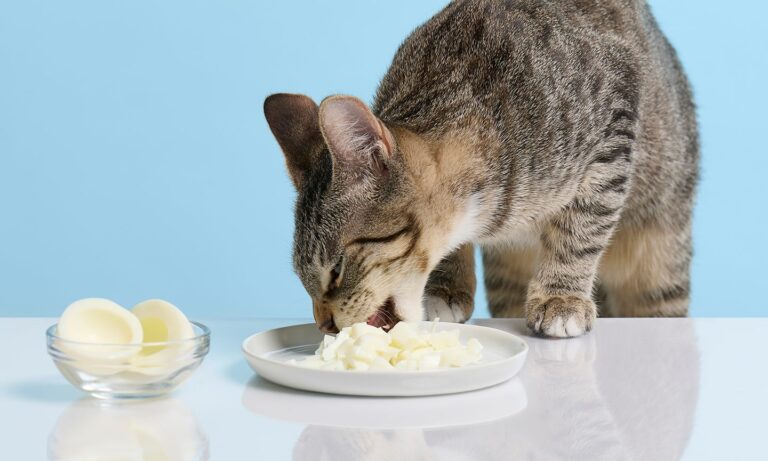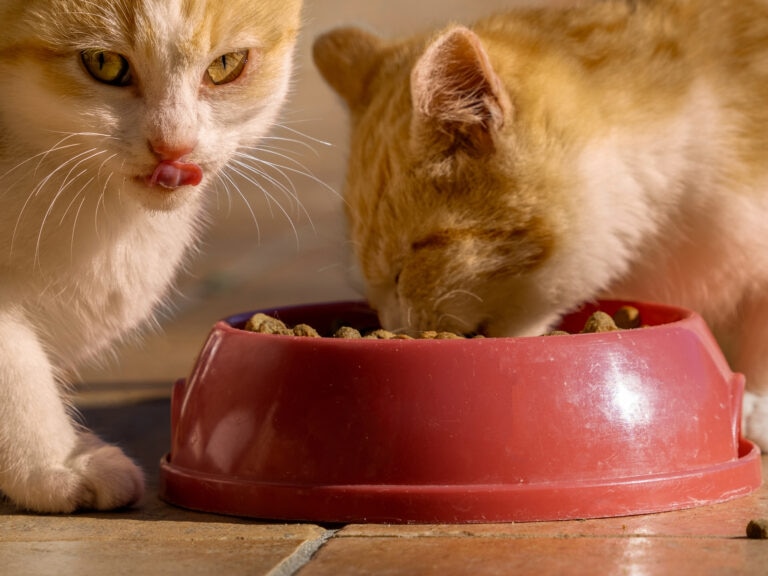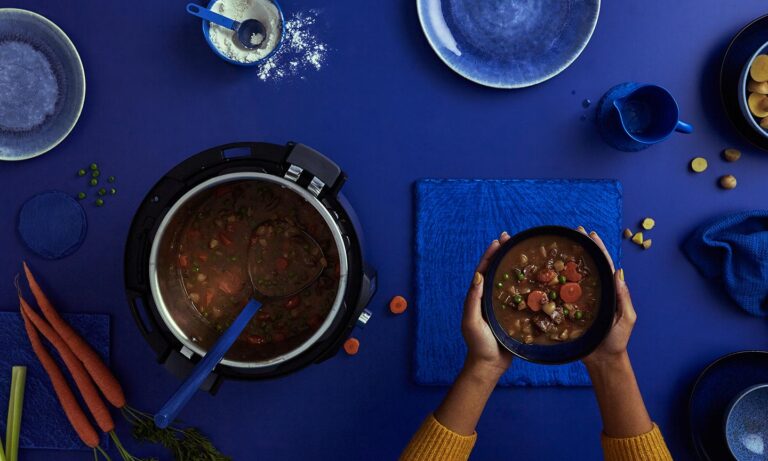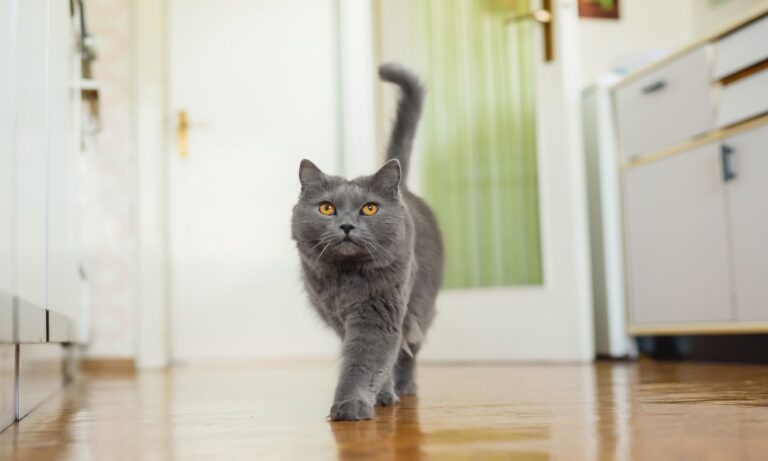How Much To Feed a Cat: Portions, Counting Calories, and More

Photo by iStock.com/eclipse_images
As pet parents, we spend a lot of time determining what to feed our cats, but figuring out how much to feed your cat is just as important.
Not feeding your cat enough can lead to nutrient deficiencies and weight loss, but overfeeding in cats is a much more common problem.
Studies show that approximately 61% of cats in the United States are overweight or obese. Extra body fat puts cats at increased risk for life-shortening conditions like diabetes and high blood pressure.
However, knowing how much to feed your cat and providing them with the appropriate amount of food helps them to maintain a healthy body weight—which is essential for a cat’s overall health and happiness.
So, how much food does your cat need?
These general guidelines are a great place to start. Keep in mind, however, that your veterinarian will always be your best resource for determining your cat’s unique nutritional needs.
Factors That Impact How Much to Feed a Cat
How much to feed your cat can be impacted by a variety of factors, including:
- Age: For this discussion, we’ll address cats over 10 months of age, which is when most cats can switch from kitten food to adult food. Keep in mind that kittens require more energy and nutrients to help them grow when considering how much to feed them, and senior cats’ nutritional needs may shift as they age, too.
- Size: Larger breeds, like Maine Coons, need to eat more than their smaller counterparts. Even within the same breed, some individuals naturally have a smaller frame than others and require less food.
- Activity level and metabolic rate: Cats who routinely get a lot of exercise burn more calories than feline couch potatoes. Just as each person has a unique individual metabolism, cats vary too. An individual cat’s metabolic rate may be higher or lower than the average cat.
- Reproductive status: Spaying and neutering a cat reduces the number of calories they need. However, on the flip side, pregnant and nursing cats should have unlimited access to food. A pregnant cat’s food should be appropriate for kittens all life stages to meet the intense nutritional demands that reproduction puts on their bodies.
- Body condition and health: Some health problems can also cause cats to gain or lose weight. Talk to your veterinarian about your cat’s body condition score and if your cat needs to gain or lose large amounts of weight or appears sick.
How Much To Feed a Cat Chart
The chart below presents average serving sizes based on a cat’s weight and other factors. Keep in mind that an individual cat’s needs can vary by as much as 50% in either direction from the average, so talk to your veterinarian to determine the best food portions for your cat.
| Cat Weight | Spayed or Neutered Cat | Intact Cat | Cat Prone to Gaining Weight | Cat in Need of Weight Loss |
|---|---|---|---|---|
| 5 lbs (2.3 kg) | 157 kcal / day | 183 kcal / day | 131 kcal / day | 105 kcal / day |
| 7.5 lbs (3.4 kg) | 210 kcal / day | 245 kcal / day | 175 kcal / day | 140 kcal / day |
| 10 lbs (4.5 kg) | 260 kcal / day | 303 kcal / day | 216 kcal / day | 173 kcal / day |
| 12.5 lbs (5.7 kg) | 298 kcal / day | 362 kcal / day | 258 kcal / day | 207 kcal / day |
| 15 lbs (6.8 kg) | 354 kcal / day | 413 kcal / day | 295 kcal / day | 236 kcal / day |
| 17.5 lbs (7.9 kg) | 396 kcal / day | 462 kcal / day | 330 kcal / day | 264 kcal / day |
| 20 lbs (9.1 kg) | 440 kcal / day | 513 kcal / day | 367 kcal / day | 293 kcal / day |
How To Convert Calories into Portion Sizes for Cat Food
Once you’ve determined how many calories your cat needs daily, you need to figure out how much of their food will provide those calories. The good news is that manufacturers are required to list a food’s caloric content on the pet food label.
On cat wet food labels, it will be written as kcal/kg and kcal/can. On dry food, it will be written as kcal/cup. Don’t be intimidated by the lingo; in nutrition circles, a kcal (kilocalorie) is the same as a calorie.
Divide your cat’s caloric needs (kcal/day) by the food’s caloric content (kcal/can or cup). The answer will let you know how much food your cat needs each day.
To figure out how much food to feed at each meal, simply divide the daily amount of food by the number of meals you plan to offer each day.
For example, let’s say your cat is spayed or neutered, weighs 10 pounds, and is very active.
According to the chart , your cat should consume 260 kcal/day. Now, imagine they are on a diet of Purina Pro Plan White Meat and Vegetable Canned Food.
Let’s take a look at the label:
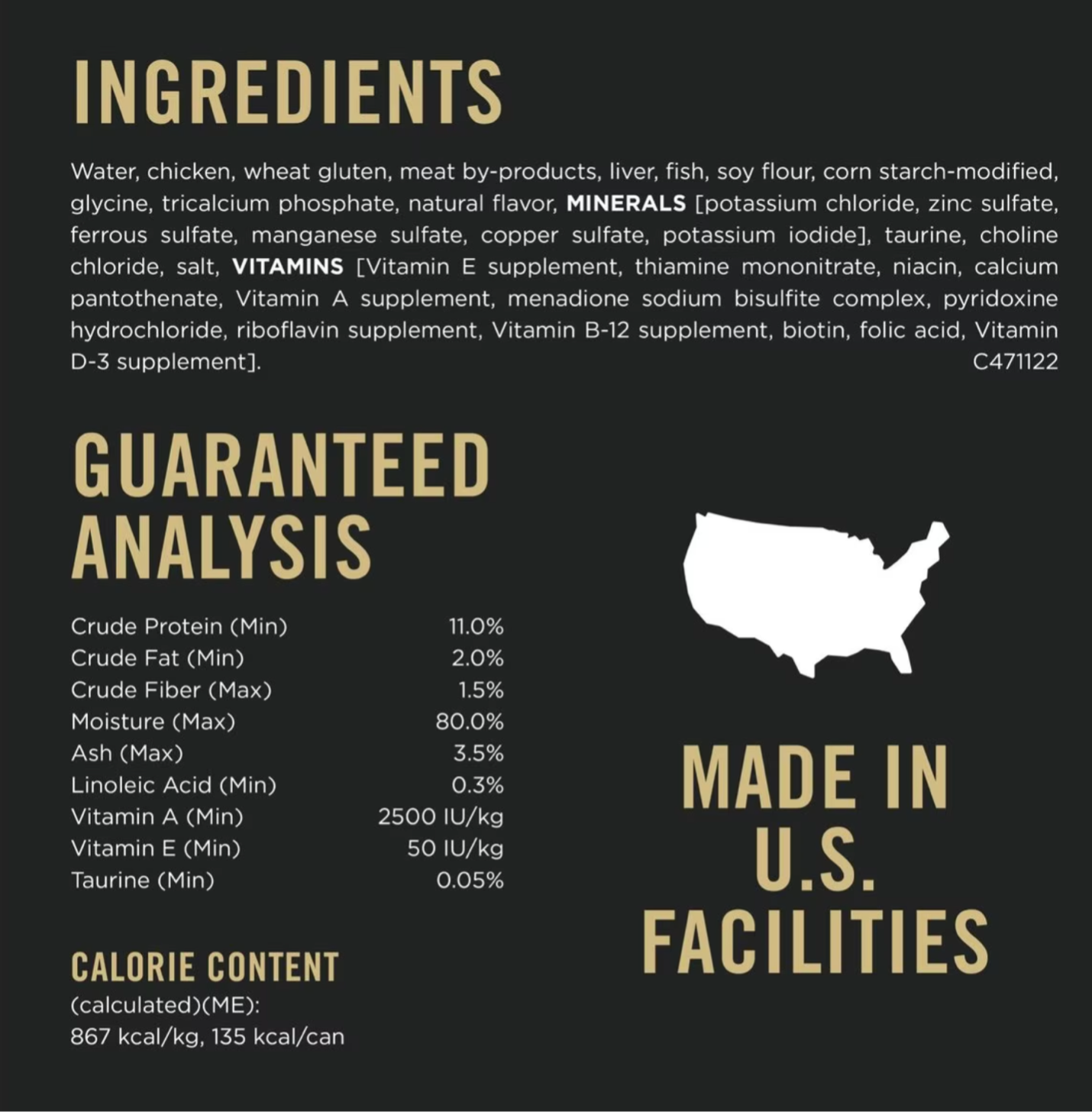
Since the calorie content of the wet cat food is 73 kcal/can, you would determine your cat’s daily portion by dividing 260 kcal/day by 73 kcal/can.
260 kcal/day ÷ 73 kcal/can = 3 ½ (3.5) cans
If you feed two meals per day, divide 3.5 by 2 to find out how much to feed at each meal: roughly 1 ¾ (1.75) cans per meal.
Pro Tips: If you don’t use the whole can of wet cat food and want to store the rest, ORE Pet can covers can help keep the cat food fresh.
To encourage your kitty to “hunt” and work for their food, consider feeding your kitty’s wet food in an interactive puzzle feeder made for wet food such as a or an interactive layered puzzle made for both dry and wet food.
Recommended Products
Feeding Wet Cat Food vs. Dry Cat Food
Should you feed your cat wet food, dry food, or some of both?
The question of what the overall benefits of wet cat food versus dry cat food is more complicated than it seems and is determined by many factors including:
- Your cat’s weight
- The calories, protein, and fat in each food
- The amount of food fed
- Any health issues your cat may have
Dry cat food contains around 10% water, and wet food contains around 70% water. Dry food is typically less expensive and doesn’t have to be stored in the refrigerator.
Certain types of dry food can benefit cats with health conditions, such as dental diets made of kibbles that work like a toothbrush and help reduce plaque, stain, and tartar buildup right up to the gumline.
The largest benefit of wet food is the amount of water included, which can especially benefit cats with certain health conditions including kidney disease, lower urinary tract disease, and diabetes.
Because it’s such a loaded answer depending on your cat, partnering with your vet is key to determining whether to feed your kitty dry, wet, or both types of food.
How Often Should I Feed My Cat?
Cats have evolved to eat numerous small meals throughout the day—but leaving food out all day is a major risk factor for obesity in cats.
At a minimum, a cat’s total daily food intake should be divided into two meals, but more (up to six!) is better.
You can consider an automatic timed cat feeder, like the Cat Mate Feeder, that can be preloaded with multiple, measured meals is a great way to provide your cat with just the right amount of food, divided into small meals. Or find fun and creative ways to hide your cat’s dry food by using a cat food tree or an interactive food puzzle.
This content was medically reviewed by Molly Price, DVM, Chewy veterinarian.


